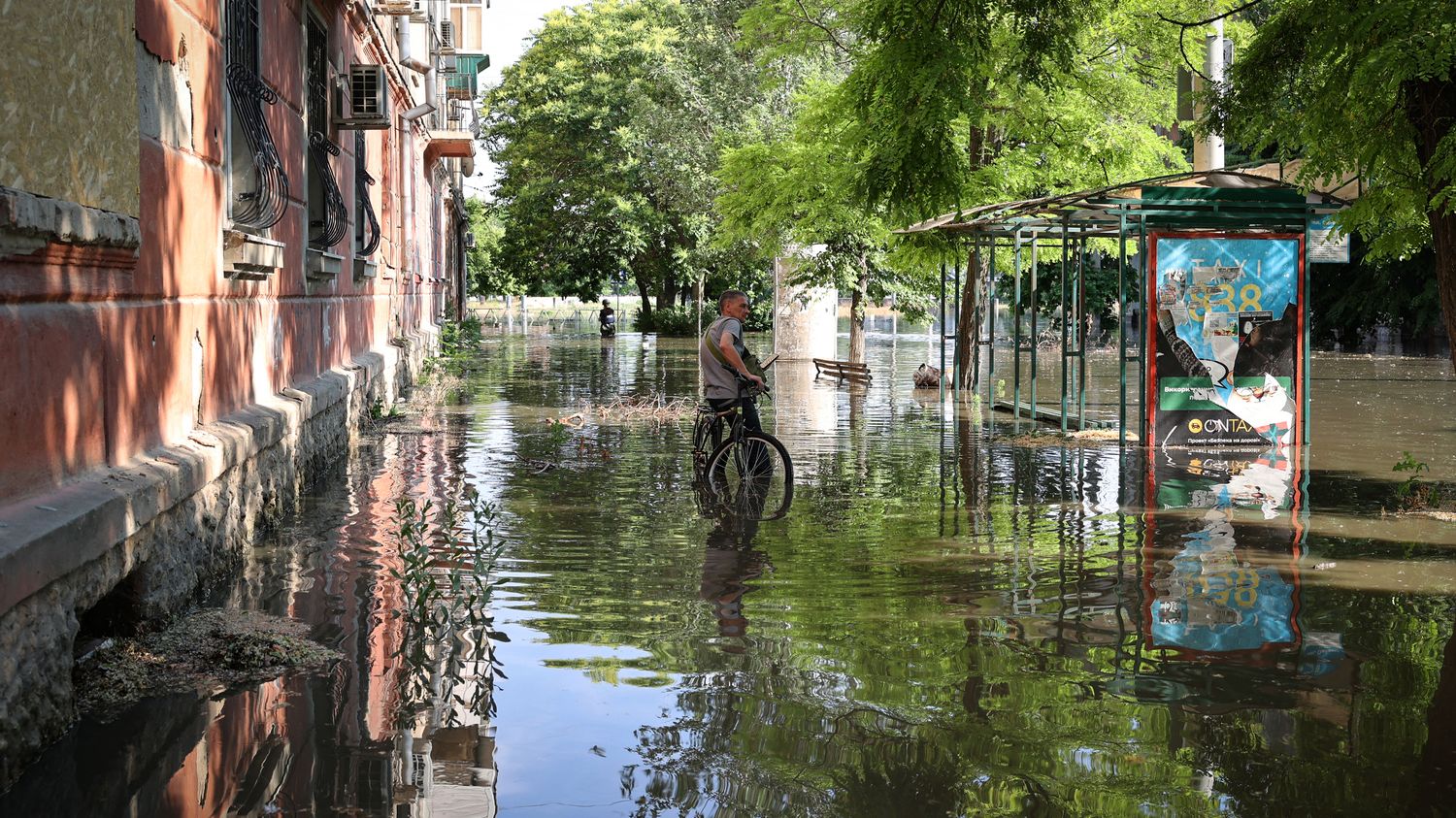Professor Yevhen Korzhov, a researcher at Kherson University, estimates that the flood has passed its peak but will still last 10 to 15 days. He is worried about the medium and long-term consequences of this unprecedented event.
Mass evacuations, due to man-made flooding. The destruction of the Kakhovka dam in Ukraine led to a rise in water levels in the lower course of the Dnipro River on Tuesday (June 6th). Many localities are battling the elements, and the water level has risen, for example, by 3.50 meters in the Korableny district of Kherson, the regional capital. Researcher Yevhen Korzhov, hydrologist and biologist at Kherson State University, warns of groundwater pollution and disruption of the ecosystem.
>> Follow our live on the consequences of the destruction of the dam and on the front of the conflict in Ukraine
Franceinfo: What is the situation and how fast are the waters rising after the destruction of the Kakhovka dam?
Yevhen Korzhov: After the destruction of the Kakhovka hydroelectric power station, the section of the lower Dnipro began to be significantly flooded by river waters from the Kakhovka reservoir. After the break of the dam, the localities closest to the power plant were the most flooded, namely: Nova Kakhovka, Mykolaivka, Krynyk, Kozachi Lageri, Burgunka, Tyaginka, Oleshki, Gola Prystan, Kherson and other towns and villages coastal.

What are your projections for the next few hours and days?
The water will reach its maximum level in the bed of the Dnipro for about a day. Then the level will gradually decrease and the coastal areas of the lower course of the river will gradually dry up. Currently [dans la nuit du mardi 6 au mercredi 7 juin], we observe the peak of the flooding of the territory. According to our data, the rise in water levels in the territory should last 10 to 14 days.
How bad will the floods be in the regional capital, Kherson?
Rescue services and volunteer groups are actively working in the city to help and evacuate the local population. According to the latest information, the districts of Ostriv, Naftogavan and Hydropark are the most affected by this man-made flood, as well as other low-lying areas near the river. Downstream from Kherson, the flooding of the territories is not so strong, since the water diffuses through the branches of the river delta.
Currently, large wetlands in southern Ukraine remain flooded, including the river delta, which is protected by the Ramsar Convention on Wetlands of International Importance. A significant number of rare birds and typical animals find refuge in non-flooded areas, including in residential areas, despite the fear of humans.
In the coming days, we expect the water level in the city of Kherson to drop to safe levels for residents. Over the next week, the flood should be completely subsided in the city and most of the territories of the lower Dnipro.
Will the water level soon drop? At what deadline?
In Nova Kakhovka, still under Russian occupation, the first returns suggest that the rising waters have stopped [mardi] around 6 p.m. This suggests that the water will soon stop rising in other coastal areas downstream of the Dnipro. But the water is still very high in the city: on social networks, theResidents post photos and videos of the foundations of their flooded homes, or of buildings in the city.
Tomorrow, [ce mercredi], the water should drop in most of the affected areas, according to our calculations. The flood is expected to last another 10 to 15 days, after which the water level is expected to drop significantly in the network of canals and plains in the lower part of the river. Indeed, the water of the river will stop flowing from the Kakhovka reservoir, when it is almost completely drained.
What are the consequences for the drinking water supply?
The situation is especially critical for the cities of the Kherson region, which get their water supply from wells and the Dnipro. At present, the use of water from the river is strictly discouraged for the population. Current velocities are high in the riverbed, and floodwaters have carried away silt that has accumulated over many years. This polluted water easily enters the water pipes and the wells of the inhabitants. Kherson’s drinking water, on the other hand, comes mainly from the water company’s deep wells. At this stage, the inhabitants of the city are not exposed to this type of pollution.
What are the longer term consequences?
In the long term, the polluted waters will flow continuously towards the lower part of the Dnipro, from the dried up Kakhovka reservoir. Pollution and the pathogenic micro-organisms they contain can penetrate groundwater. More broadly, the sanitary and epidemiological state of surface and underground waters will deteriorate over the coming months. The competent services are already ready to provide assistance to potential victims of contaminated water. The most dangerous, in our view, is the potential degradation of the quality of natural surface waters over a vast area which, according to our preliminary calculations, extends over approximately 3,600 square kilometres.
Then, the water deficit, in the lower part of the Dnipro, will be compensated by an influx of salt water over time. Inevitably, this will destroy most native species of freshwater flora and fauna. This temporary flooding, which we are witnessing, is the starting point of a great ecological catastrophe, which has never yet occurred on the territory of Europe during this century.
